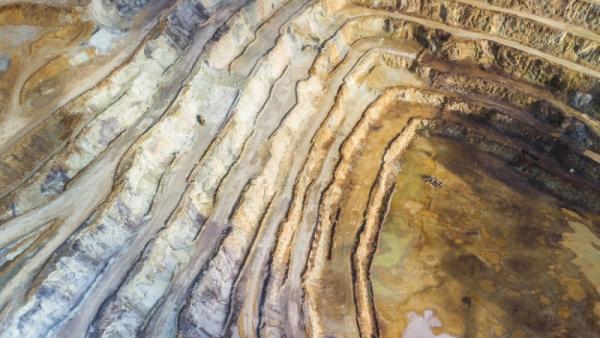Photofex_AUT / Shutterstock

James Laurenceson, Director, Australia-China Relations Institute, University of Technology Sydney |
Note: This article appeared in The Australian Financial Review on May 6 2024.
Treasurer Jim Chalmers last week made it clear that in responding to global ‘churn and change‘, the government saw its Future Made in Australia evangelism going hand-in-hand with a more security-minded approach to managing foreign investment.
The biggest churns Australia faces, according to Chalmers, are the net zero transformation and US-China great power competition.
To emerge as a ‘primary beneficiary’ of this new environment, Australia needs to become ‘a renewable energy superpower, and an indispensable part of the global net zero economy’.
This, in turn, will require the federal budget putting ‘a greater emphasis on security’ – not just on national security, such as paying for nuclear-powered submarines, but economic security as well.
Taxpayer dollars will be used to support local projects aimed at bolstering supply chain resilience, while Treasury will administer a foreign investment regime that more closely scrutinises ‘risky’ proposals.
Unsurprisingly, many pundits read this as ‘Chinese investment’ proposals. The treasurer himself insisted the regime would remain ‘non-discriminatory’ and so did not expect any blowback, such as reduced Chinese investor interest or policy retaliation by Beijing.
And to be sure, it’s not clear how the mooted changes might lead to different outcomes for Chinese proposals.
Chalmers nominated critical infrastructure and critical minerals as two areas considered particularly ‘sensitive‘. But there’s been an apparent defacto ban on Chinese investment in the former since around 2016 and in the latter since 2020.
On one level, the treasurer’s message displays impressive nuance. He was surely correct to state that ‘an artificial distinction between our prosperity and our security’ is too often drawn.
The problem is that the geopolitical attentiveness now being cited might less charitably be described as economic naivety. And economic naivety harms not only Australian prosperity, but its security interests too.
Consider this: in 2023, Australia’s most valuable critical minerals export was lightly processed lithium spodumene, worth $18.8 billion. This was up from $1.3 billion in 2019.
Australia now also accounts for 46 percent of global lithium extraction, providing a major upstream boost to the resilience of lithium supply chains.
Yet while today’s securitised foreign investment regime blocks further Chinese participation in Australia’s critical minerals sector, it was approving Chinese investment proposals a decade ago that has delivered Australia’s lithium production boom now.
Multiple capital injections from Tianqi Lithium, for example, have more than doubled the capacity of the Greenbushes mine in Western Australia.
Australia has also prospered and contributed to supply chain resilience further downstream.
Last year, Australia’s first facility capable of transforming spodumene into battery-grade lithium hydroxide began selling to international customers, including in South Korea and Sweden. In 2023-24, the value of these exports is forecast to reach $478 million, and by 2029, Australian supply will jump to 15 percent of global lithium hydroxide production.
But this facility, also located in WA, only exists because Chinese investment was welcomed in 2016 and came bundled with world-leading processing technology.
Next year, a US-owned lithium hydroxide facility is expected to add to Australia’s export earnings. Yet while this might be, to use Chalmers’ parlance, the ‘right kind of investment’, the technology and skilled labour making it happen also comes from China.
Subsidise operations
Despite this experience, the government now seems to imagine that blocking Chinese proposals today will promote greater prosperity and resilience tomorrow.
Australia may well be able to attract more investment in mines and downstream facilities from investors based in geopolitically ‘like-minded’ countries. But luring them here could require taxpayers to subsidise their operations.
And a more fundamental problem is that ‘less risky’ foreign investors might simply not be up to the Chinese standard.
Establishing and sustaining a globally competitive industry demands the world’s best technology. Just ask Australia’s nickel producers, now being squeezed out of global markets by Indonesian competitors able to access lower cost Chinese production methods.
Or move beyond lithium and nickel to consider rare earths. Last year, a report prepared for the US Congress and government departments estimated there are now 12,000 full-time researchers in China focused on rare earths, spread across four national labs. This compares with just 300 in the US.
The commercial rare earths sector in China is also estimated to host more than 300,000 full-time employees, compared with around 400 in the US, delivering enormous process knowledge advantages.
Adding further substance to fears of economic naivety in Canberra is that governments in ‘like-minded’ countries often appear more intent on deploying their resources to incentivise the ‘on-shoring’ of supply chains rather than ‘friend-shoring’ them with Australia.
To list just one example: last month the US Department of Energy announced a $US2.3 billion ($3.5 billion) loan facility to finance the construction of a huge new lithium processing plant in Nevada. Once completed, there will be no need for American battery-makers to source inputs from Australia.
The treasurer is right that heightened geopolitical tensions need to be recognised and responded to. But the guiding principle should be economic reality, not geopolitical wishful thinking.
Author
Professor James Laurenceson is Director of the Australia-China Relations Institute at the University of Technology Sydney.


